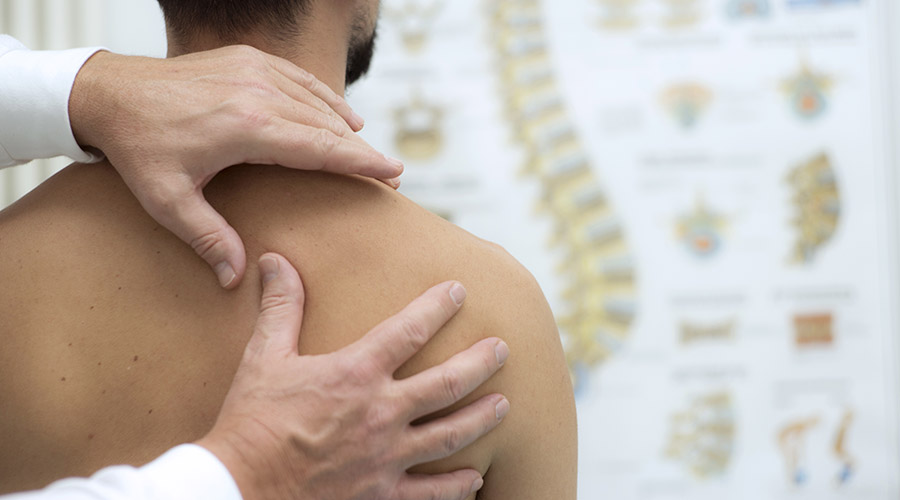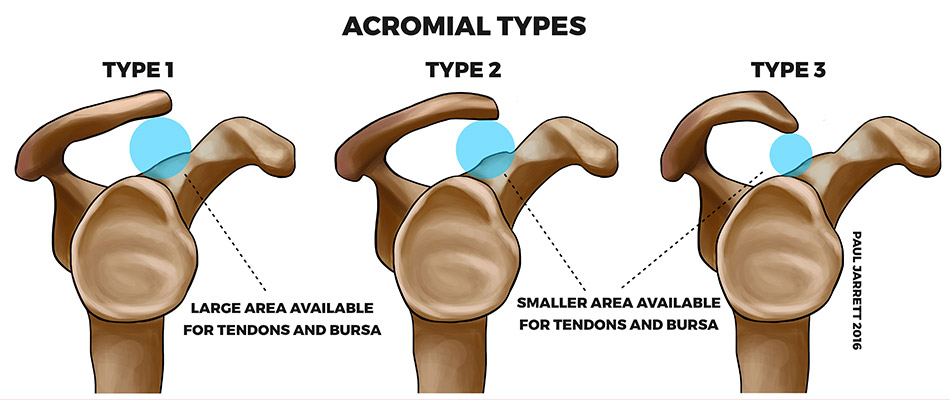
To say that a shoulder joint is “Impinged” is a vague statement. Shoulder pain comes in many forms, but this blanket impingement term IS a way to start a conversation. Most shoulder pain deals with the issue of space, and structures that exist in a limited space. Specifically, bursa (fluid sacs), fibrous capsular tissue, muscles and their tendinous attachments to bone are tightly arranged in a small window that changes size with arm movement. When someone has pain in the shoulder, it’s important to discover which of these structures is limiting motion or making it painful.
One area to think about is if the cause is an anatomical abnormality or a postural abnormality. This is the difference between a primary and secondary impingement. The bony shelf that is just above the humerus is called the acromion. In a primary impingement, the tip of the acromion is hooked inward, causing irritation along the top or superior shoulder. These are often handled with surgical resurfacing of the bone to fix the space issue.

Photo provided by Murdoch Orthopaedic Clinic.
A secondary impingement deals with the postural habits of our patients. This could mean stooped, forward posture causing supporting muscles of the shoulder to be stretched and ultimately weak over time. This could mean repeated motions like overhead throwing leading to instability of smaller supporting muscles. It could also mean that muscles and structure in the neck and upper back are not moving as they should, causing greater stress and muscle activity through the shoulder. These type II impingements are of great interest in therapy, as PT can address these and work to change relationships between muscles and the structures that complement motion.
The author would like to recognize Mike Reinold as a reference and resource.

